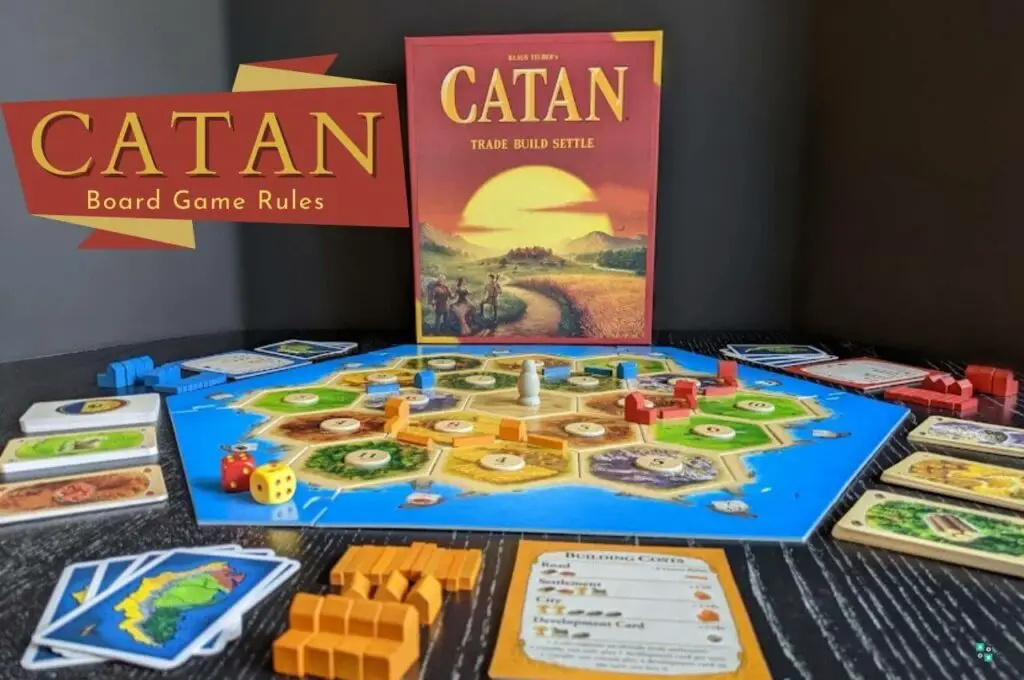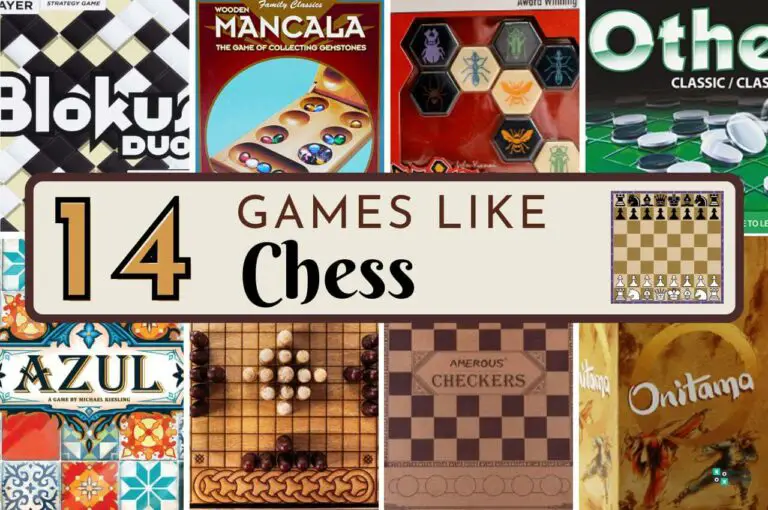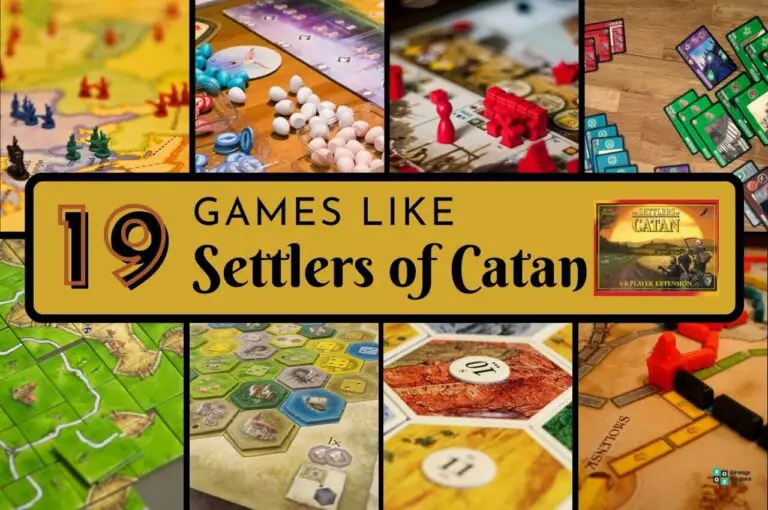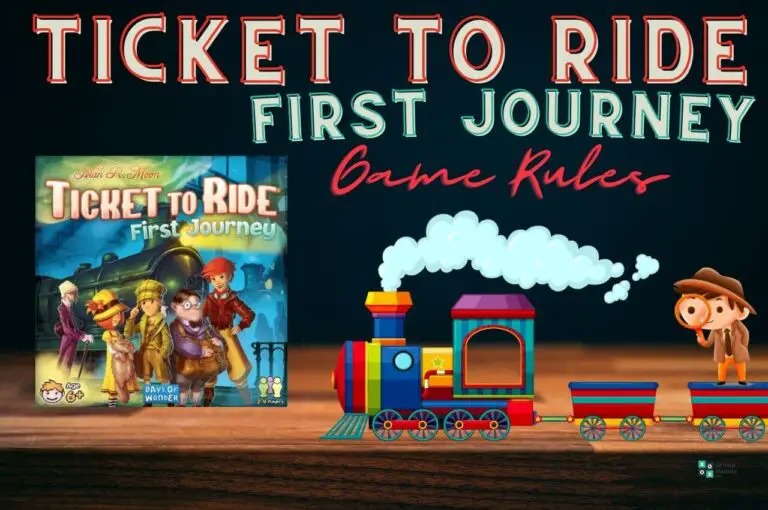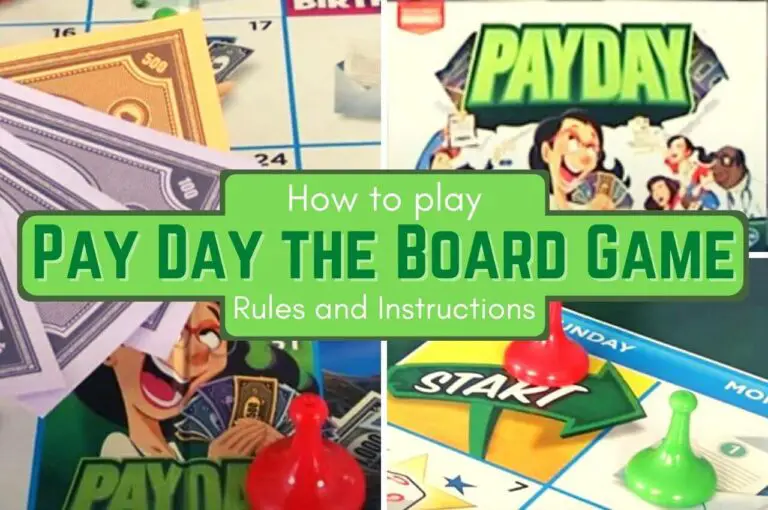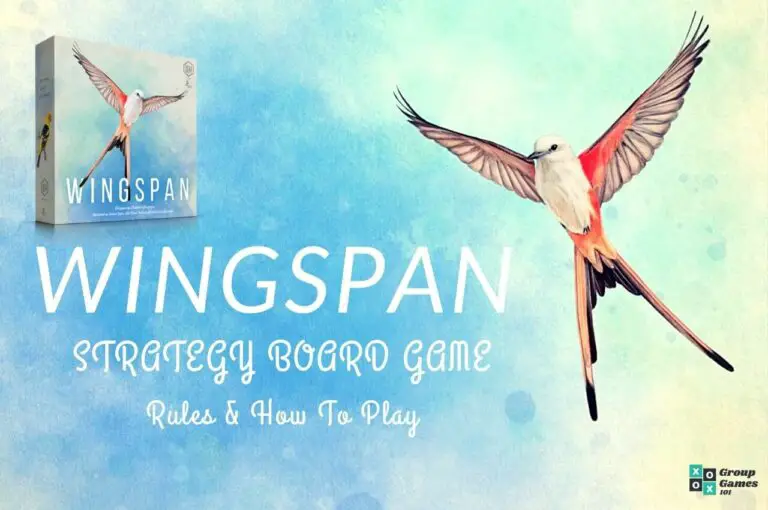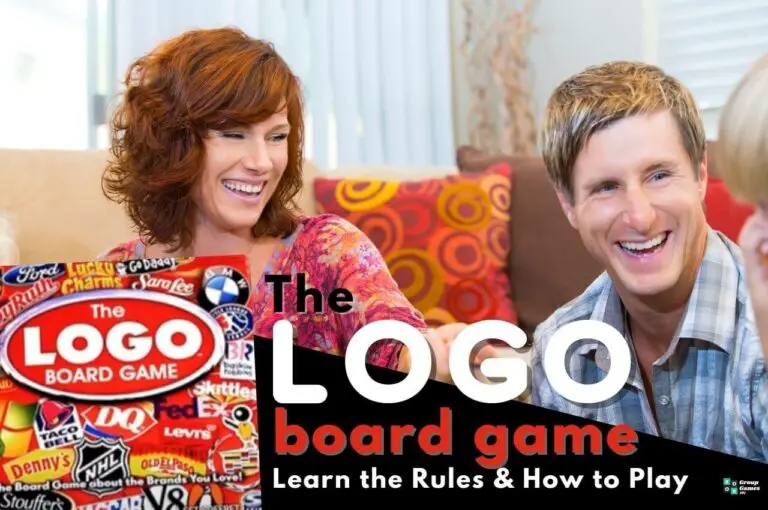As a settler on the newly found island of Catan, you will compete with other settlers by building roads, settlements, and cities to obtain resources and gain victory points. In this Catan board game rules guide, we will show you step by step how to be the most successful settler on the island!
Catan, originally released back in 1995 by designer Klaus Teuber, was released as “Settlers of Catan” and was only available in Germany. Since then, it has become known as one of the most popular family games worldwide and has sold over 32 million copies!
By utilizing the perfect combination of skill and luck, this multi-award-winning game of Catan will keep players coming back for more.
Discover how it all started by learning how to play Catan below!
What is Catan the Board Game?
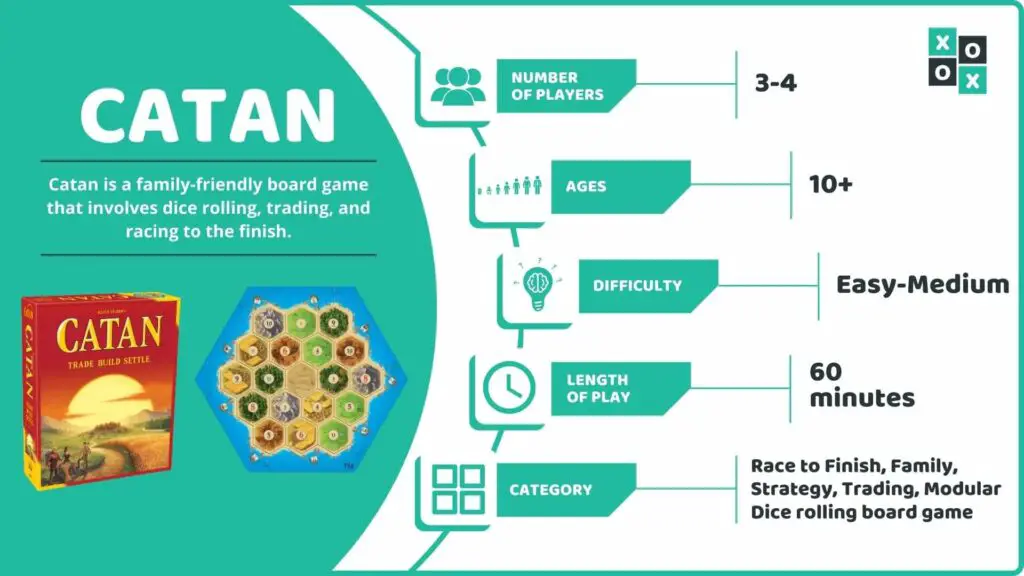
Catan is a family-friendly board game that involves dice rolling, trading, and racing to the finish. Players will compete with each other to be the first to obtain 10 victory points, but they will also have to work cooperatively to trade resources amongst each other.
Number of players: 3-4
Ages: 10+
Difficulty: Easy/Medium
Length of play: Approx. 60min.
Category: Family, Strategy, Dice Rolling, Race to Finish, Trading, Modular Board
Similar to: Through the Ages: A New Story of Civilization, Istanbul, Terra Mystica
Main Objective: Build as many roads, settlements, and cities as you can to gain 10 victory points before the other players!
Why We Love It: We love the suspense of every dice roll and trading with other players. Also, every time the game is played, you can change the layout of the board to make it different every game!
What You’ll Need to Play Catan
Everything you will need to play Catan can be found in the box:
The following components are available in each base game:
- 19 Terrain Hexes (hexagon tiles)
- 6 Sea Frame Pieces
- 9 Harbor Pieces
- 18 Circular Number Tokens
- 95 Resource Cards (Brick, Grain, Lumber, Ore, and Wool)
- 25 Development Cards
- 14 Knight Cards
- 6 Progress Cards
- 5 Victory Point Cards
- 4 Building Costs Cards
- 2 Special Cards
- Longest Road
- Largest Army
- 16 Cities (shaped like churches)
- 4 of each color
- 20 Settlements (shaped like houses)
- 5 of each color
- 60 Roads (shaped like bars)
- 15 of each color
- 2 six-sided dice
- 1 red
- 1 yellow
- 1 Robber Pawn
- 1 Pamphlet containing rules and almanac
Catan Board Game Rules
Game Setup
Follow these simplified instructions to set up a game of Catan:
- Connect the Sea Frames by matching the numbers on the end of each Sea Frame. This will create a hexagon of Sea Frames.
- If it is your first time playing, the rulebook suggests a specific way to set up your tiles. However, to keep each game unpredictable, most experienced players take all 19 hexagon tiles and place them at random inside the completed Sea Frame.
- Take the circular number tokens and place them randomly on top of each of the hexagon tiles that represent a resource. You do not need to put one on the blank desert tile.
- Place the robber on the desert tile.
- Each player selects which color they would like to play with and obtains all of the roads, settlements, cities, and Building Cost cards matching that color. Keep these in front of you during gameplay.
- Determine who will be the first player and start the game!
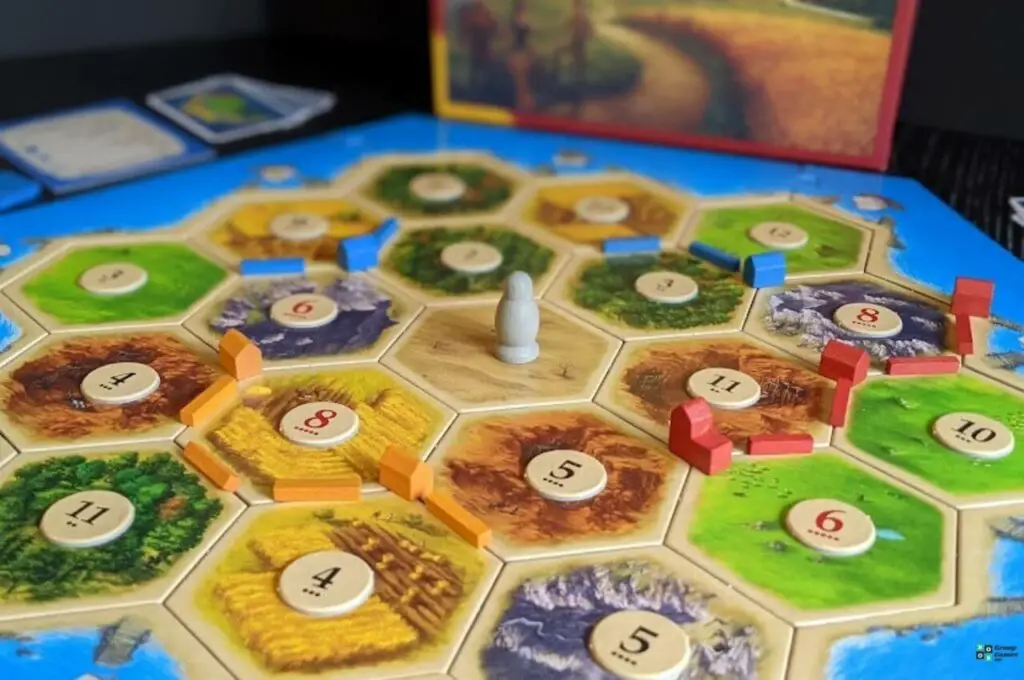
How to Play Catan
Before you start a game of Catan, it’s important to understand the basics of how the game works and how each component is used.
Hexagon Tiles:
Each hexagon tile on the board represents a resource:
- Red Hills: Brick
- Dark Green Forest: Lumber
- Silver Mountains: Ore
- Yellow Fields: Grain
- Light Green Pasture: Wool
- Desert: Neutral/Does not produce a resource (starting space for the robber)
Your goal is to collect resources in order to build as many roads, settlements, and cities that you can to gain victory points.
Placing a Settlement:
When you place a settlement on the corner of a tile that represents a resource, you have a chance of obtaining that resource type, depending on the dice rolled each turn.
Ideally, you should place a settlement, so it touches 2 or 3 tiles to have a higher chance of obtaining various or multiple resources.
Number Tokens:
Thenumber tokens that were placed on each tile represent the dice roll that needs to be made in order for a player to obtain that specific resource.
For Example: If a player (including yourself) rolls a result of “8”, any player with a settlement that touches a tile with that number will obtain that resource. There may be more than one tile with the same number token, which will allow extra resources if you have a settlement there, also.
However, if you have a settlement touching one of those “8” tiles but there is a robber on that tile, no player will obtain resources from that tile until the robber has been moved.
Before placing your settlements and cities, pay attention to the number tokens and follow this chart that shows the odds for each dice roll:
- 2 and 12 = 3%
- 3 and 11 = 6%
- 4 and 10 = 8%
- 5 and 9 = 11%
- 6 and 8 = 14%
- 7 = 17%
Based on this chart, you will have a better chance of obtaining resources from tiles that have a higher percentage of being rolled.
Rolling a 7:
While 7 is the most commonly rolled number, there are no number tokens with a 7.
If you roll a 7, two effects take place:
- You can move the robber to any tile on the game board, which will prevent players from obtaining resources from that specific tile, temporarily.
- If you move the robber to a tile that has another player’s settlement touching it, you may randomly steal one of their resource cards. (If there is more than one player’s settlement on this tile, you choose which player to steal from)
- If any player has 8 or more resource cards in their hand when a 7 is rolled, they must discard half of their hand (rounded down). Therefore, if you had 9 cards in your hand, you have to discard down to 4 cards!
Starting the Game
At the start of the game, the first player chooses a spot on the game board to place 1 settlement and 1 road for free (meaning they do not need to spend resources to build them).
The settlement and road that are built must connect to each other. Then, every player afterwards, in clockwise order, will place their own settlement and road in the spot of their choice.
When the last player places their settlement and road, they will immediately place another 1 settlement and 1 road (for free) in a spot of their choice and obtain 1 of each resource that this new settlement touches.
Then, in counter-clockwise order, each other player will do the same until the first player has completed this step. This process allows players to start with 2 VP each and also provides players some resource cards to start with.
NOTE: The second set of settlements and roads that are placed do not need to touch the first set, but the second settlement and road must be connected to each other.
Turn Order
On a player’s turn, they will follow these steps in order:
- Roll the Dice
Roll the set of dice and announce what the total face value is. Any player who owns a settlement that touches a tile with that number on it collects a resource card of that type.
If a player owns more than 1 settlement on a single resource tile, they obtain the amount of resources that match the amount of settlements touching that tile.
Similarly, if a player has a settlement on two separate resource tiles that have the same number token, they will obtain resources from both tiles depending on how many settlements are touching each tile.
- Trade Resource Cards
There are two types of trade actions you can take on your turn:
- Domestic Trade: The active player may ask other players for a specific resource card and offer another type in return. It is possible to trade different types and amounts in the same trade.
Not all players may have cards you need, and if they do, they may not want to trade, which is up to them to decide.
NOTE: Players can only trade with the active player; they cannot trade amongst anyone else during the active player’s turn!
- Maritime Trade: Along the sides of the game board on the sea frames, you will find docks that lead to different ships with symbols on them. If you have a settlement on a dock, you may perform the implied action on the ship’s sail.
These ships allow you to make special trades with the resource supply. For example, here are some options available:
- Resource symbol with 2:1 = Trade 2 of the listed resource for 1 of any other resource.
- 3:1 = Trade 3 of the same resource and gain 1 of any other resource.
NOTE: On a player’s turn, they may trade 4 of the same resource cards for 1 of any other resource from the supply. You do not need to be on a specific space for this to be done!
- Build and/or Buy a Development Card
Once trading is completed, you have the option of building or purchasing a development card.
Building
To build either a road, settlement or city, you must have the necessary amount of resources to do so, as follows:
- Road = Brick, and Lumber (1 of each per road)
- Settlement = Brick, Lumber, Wood, and Grain (1 of each per settlement)
- City = 3 Ore and 2 Grain (per city).
NOTE: You can only build a city by “upgrading” one of your existing settlements. Choose a settlement to remove from the board and replace it with the newly built city.
As we have mentioned earlier, you gain 1 resource per settlement you have touching a tile (when it’s number is rolled). However, if you have a city touching a tile, you will instead gain 2 resources per city that is placed along the tile.
Development Cards
During the building phase, you may also purchase a development card. Each card costs 1 of each: Ore, Wool, and Grain.
Development cards are chosen at random and do not get added to your hand. They get placed face down in front of you until they are utilized.
Here is a list of the development cards available and their actions:
- Knight Cards: Instead of waiting for a 7 to be rolled to move the robber, you may instead play a Knight card to move the robber to a different tile on the board.
- Progress Cards: There are different progress cards available; simply follow their directions, then discard it once it’s completed.
- Victory Point Cards: Once you obtain this card, you must keep it face down in front of you at all times until you have enough victory points to win the game!
NOTE: Once you pick up a card, you cannot use that card until your next turn except for the Victory Point card (if it will let you win a game on that same turn).

How to Win and Keep Score in Catan
To win a game of Catan, you must be the first player to obtain 10 Victory Points!
Here are all of the ways you can gain Victory Points throughout gameplay:
- Per Settlement that is built, you gain 1 VP.
- Per City that is built, you gain 2 VP.
- If you have a VP Development Card, they are worth 1 VP each.
Special Scoring Cards
Longest Road: The first player to build a continuous road of 5 or more road segments will gain this card which immediately grants them 2 VP.
However, throughout gameplay, if anyone else builds a road that is longer than the owner of this card, they will steal this card from you and the 2 VP.
Largest Army: The first player to use 3 Knight Cards will obtain this card and immediately gain 2 VP. Throughout gameplay, if another player has played more than 3 Knight cards, they will steal this card along with the 2 VP.
NOTE: When a player has a special card stolen from them, they must remember to subtract 2 VP from their total score since they no longer meet the card’s conditions.
Catan Video Tutorial
Frequently Asked Questions
Why is Catan such a popular game?
Catan is so popular thanks to it’s simple playing technique. Players enjoy the combination of both skill and luck: You need skill to place your settlements in the appropriate spaces and for trading, but the dice rolls are strictly luck!
Can you play Catan with only 2 players?
You cannot play the base game of Catan with only 2 players, but they do offer a 2 player card game called Rivals of Catan, along with other versions of Catan, which you can find here!
If you don’t have anyone to play the game with, they also have a digital version of the game, which allows you to play against A.I. or other players online!
Are there any expansions for Catan?
Yes! In fact, there are over 20 different versions of the game to play. Not only are there expansions for the base game, but there is also a large amount of standalone games, including Settlers in America, Game of Thrones Catan, Catan Junior, and even an Escape Room Catan!
You can find them all here!
Similar Games to Catan (Our Guides)
If you have enjoyed reading about this game of Catan, be sure to check out these similar games below:
- Stone Age (Guide coming soon!)
- Everdell rules
- Above and Below (Guide coming soon!)
- Suburbia (Guide coming soon!)
- Ticket to Ride rules
- Catan Junior rules
- Pokemon card game rules
- Spirit Island rules
- The Farming Game rules

